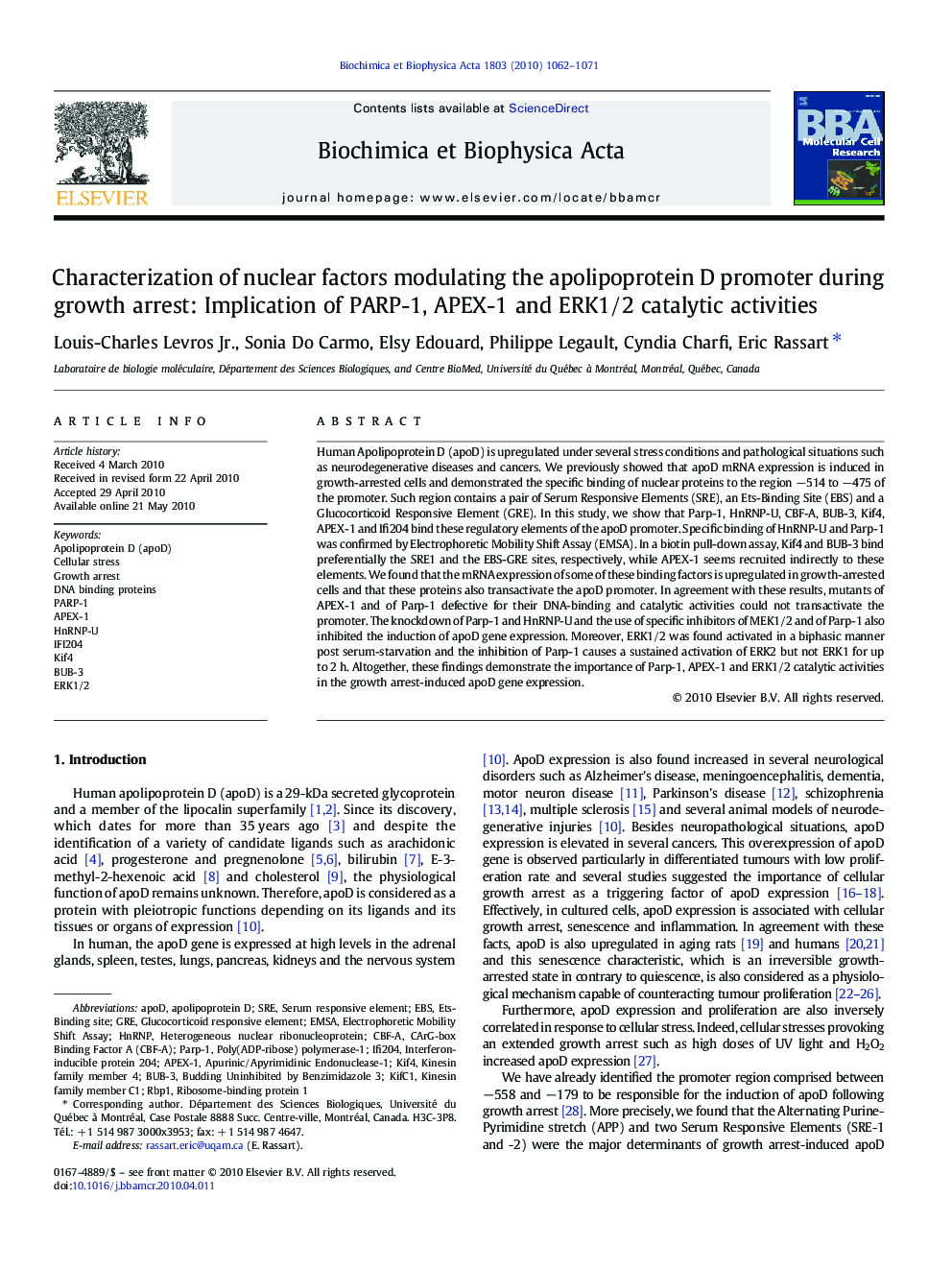| Article ID | Journal | Published Year | Pages | File Type |
|---|---|---|---|---|
| 1950934 | Biochimica et Biophysica Acta (BBA) - Molecular Cell Research | 2010 | 10 Pages |
Human Apolipoprotein D (apoD) is upregulated under several stress conditions and pathological situations such as neurodegenerative diseases and cancers. We previously showed that apoD mRNA expression is induced in growth-arrested cells and demonstrated the specific binding of nuclear proteins to the region −514 to −475 of the promoter. Such region contains a pair of Serum Responsive Elements (SRE), an Ets-Binding Site (EBS) and a Glucocorticoid Responsive Element (GRE). In this study, we show that Parp-1, HnRNP-U, CBF-A, BUB-3, Kif4, APEX-1 and Ifi204 bind these regulatory elements of the apoD promoter. Specific binding of HnRNP-U and Parp-1 was confirmed by Electrophoretic Mobility Shift Assay (EMSA). In a biotin pull-down assay, Kif4 and BUB-3 bind preferentially the SRE1 and the EBS-GRE sites, respectively, while APEX-1 seems recruited indirectly to these elements. We found that the mRNA expression of some of these binding factors is upregulated in growth-arrested cells and that these proteins also transactivate the apoD promoter. In agreement with these results, mutants of APEX-1 and of Parp-1 defective for their DNA-binding and catalytic activities could not transactivate the promoter. The knockdown of Parp-1 and HnRNP-U and the use of specific inhibitors of MEK1/2 and of Parp-1 also inhibited the induction of apoD gene expression. Moreover, ERK1/2 was found activated in a biphasic manner post serum-starvation and the inhibition of Parp-1 causes a sustained activation of ERK2 but not ERK1 for up to 2 h. Altogether, these findings demonstrate the importance of Parp-1, APEX-1 and ERK1/2 catalytic activities in the growth arrest-induced apoD gene expression.
